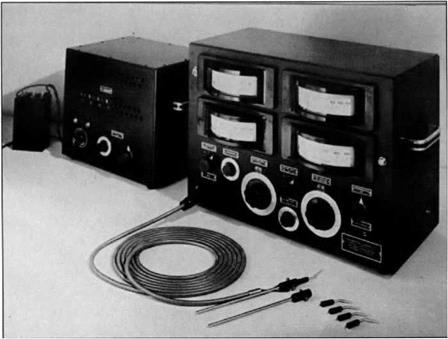INSTRUMENTATION AND DATA
By 1940 virtually all flight test involved some form of instrumentation and means for recording test data. Today instruments typically are electrical or electronic, and are built out of three basic kinds of units:
Input transducers convert physical quantities of interest into electrical signals.
Examples: pressure transducers, thermocouples.
Modifiers change those signals from one form to another. Examples: filters,
amplifiers, analog-to-digital converters.
Output transducers convert modified signals into a non-electrical quantity.
Examples: Meters, digital read-outs, X-Y plots.7
Early mechanical instruments such as recording barographs and manometers can be analyzed similarly. Whatever their form, transducers and modifiers realize various mathematical transforms or transfer functions.8
There are two main kinds of data: Analog data represent information by continuous changes in signal frequency or amplitude. Digital data code information via sequences of signal pulses.
|
Figure 2. Thermocouple apparatus ca. 1949 illustrates three main instrument elements: Thermocouple probes (foreground) produce voltages as a function of temperature. These input transducers are inserted directly into heat sources. Voltage from the probe is sent to the large box containing dials for modifying the signals which then are carried to output transducers (meters) above. [GLMWT.] |
Information gathered by instruments may not be in usable form for analysis. Data reduction is the process of converting data from the recording format (e. g., pilot notes, photos of instruments, oscillograph traces) into the format required for data analysis.9 It includes calibration corrections for systematic and dynamic instrument errors as well as environmental influences.10 Although data are collected against time, the data analysis almost always is against some performance characteristic. For example, engine performance most often is plotted against engine speed.11











